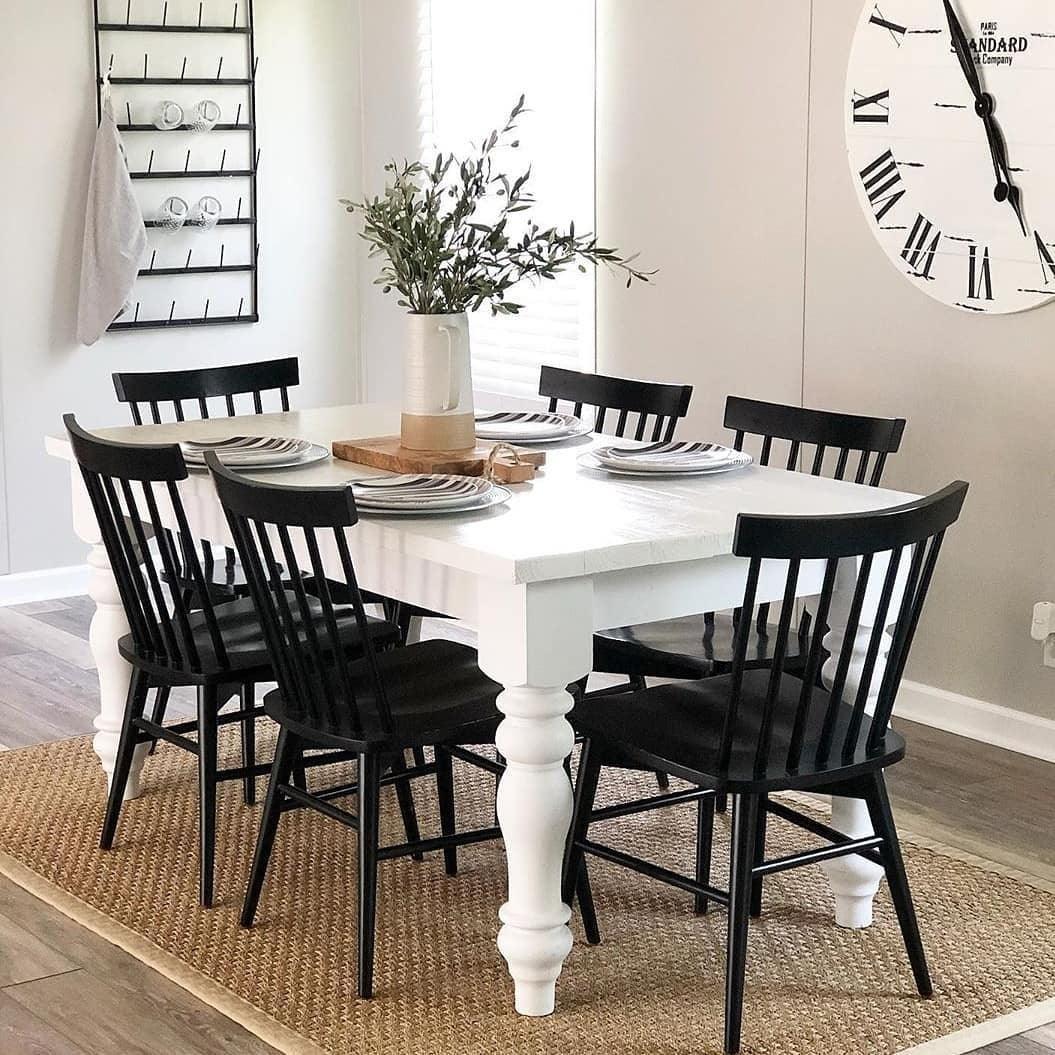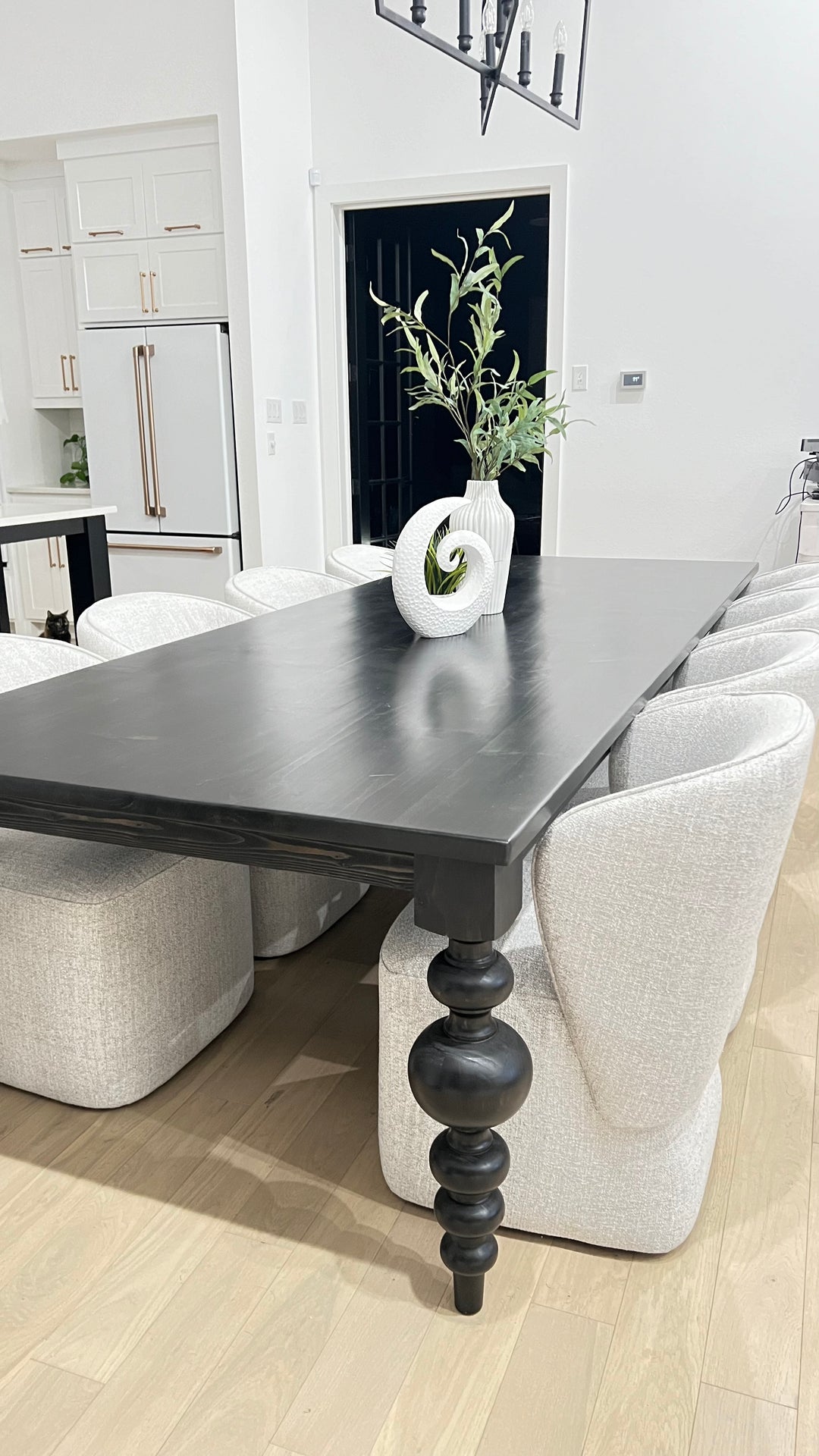How to Choose the Perfect Dining Room Table Legs for Your Home
How to Choose the Perfect Dining Room Table Legs for Your Home
Blog Article
From Traditional to Modern: Find the Suitable Eating Room Table Legs for Your Design
While traditional layouts such as cabriole and turned legs evoke a feeling of timeless refinement, contemporary styles like barrette and geometric alternatives offer an opportunity for striking aesthetic passion. As you consider these elements, the inquiry remains: exactly how can you flawlessly integrate these diverse leg designs to develop a harmonious dining experience?
Recognizing Table Leg Styles
The range of dining-room table leg designs can substantially influence both the appearances and capability of the room. Each leg design adds one-of-a-kind visual elements and practical features, catering to varied layout preferences and usage needs. Understanding these styles is important for selecting the appropriate table that lines up with your general interior style vision.
As an example, conical legs use a clean, timeless look that can enhance an area's style, while pedestal bases provide stability and maximize legroom, making them perfect for smaller sized rooms. Hairpin legs, a hallmark of mid-century modern layout, present a commercial style, allowing for an airy, open feel. Trestle legs stimulate rustic charm, giving durable support and a sense of timelessness.
Wood legs can bring warmth and structure, whereas steel options often share a smooth, modern ambiance. Ultimately, recognizing table leg designs is essential for producing a natural eating area that reflects individual style while guaranteeing usefulness and convenience.
Standard Table Leg Options
When selecting dining-room table legs, standard choices typically personify classic beauty and craftsmanship. These layouts reflect a rich heritage and a commitment to high quality, making them suitable for those who appreciate traditional visual appeals.
One of the most iconic traditional leg styles is the cabriole leg, characterized by its stylish rounded form. This layout often features decorative makings and is most commonly found in Queen Anne and Chippendale furniture. Another popular alternative is the transformed leg, which flaunts a collection of smooth, rounded forms that give a timeless look while keeping security.
Furthermore, the straight leg, while basic, offers a strong and basic structure that can mix seamlessly with a variety of tabletop designs. For those attracted to ornate outlining, claw-and-ball feet legs stimulate a sense of splendour and can act as a spectacular focal point in any dining space.
Lastly, stand bases, although not strictly legs, offer a different traditional alternative that enables adequate legroom and can be wonderfully carved. Each of these standard leg designs adds to the overall setting of an eating area, weding function with visual charm.

Modern Table Leg Styles
Modern table leg styles use a varied variety of designs that highlight cutting-edge products and clean lines. These styles often focus on functionality while functioning as striking centerpieces within a dining area. Minimalist looks prevail, with legs crafted from products such as metal, glass, and crafted wood, which add to a airy and contemporary feel.
One prominent layout is the hairpin leg, defined by its slim, tapered framework that provides stability without overwhelming the tabletop (dining room table legs). This design is usually found in mid-century contemporary furnishings and can effortlessly match numerous dining table forms. An additional trend is using geometric forms, where legs may handle asymmetrical or angular types, adding aesthetic interest and a touch of creativity

Blending Styles for One-of-a-kind Rooms
Often, property owners seek to create unique eating areas that show their individual design by mixing different style elements. This approach permits for the unification of varied visual appeals, resulting in an unified yet unique atmosphere. For example, pairing a rustic wood table with smooth, contemporary metal legs can create an eye-catching comparison that raises the room's total charm.
Furthermore, incorporating vintage table legs with contemporary table tops can stimulate a sense of history while preserving a modern perceptiveness. Such combinations not just showcase specific taste yet likewise urge creative thinking, allowing homeowners to curate a space that feels both personal and inviting.
Shade plays an important function in this blending process; selecting table legs that enhance or comparison with the existing color design can boost aesthetic rate of interest. As an example, whitewashed legs can soften the boldness of a dark table surface, producing a balanced visual.
Tips for Choosing the Right Legs
Choosing the right table go to my site legs is crucial for attaining both functionality and aesthetic allure in your eating space. Begin by thinking about the overall design of your room. Conventional setups gain from legs that feature elaborate makings or transformed designs, while contemporary areas might require smooth, minimal designs.
Next, assess the height and stability of the legs. dining room table legs. Standard table vary in between 28 to 30 inches in height, so guarantee the legs match this dimension for comfort. Additionally, robust materials, such as hardwood or metal, can improve stability and long life
Assess the leg form also-- alternatives include directly, tapered, or stand layouts. Straight legs offer a classic look, while tapered legs can add a touch of sophistication. Pedestal bases supply enough legroom and are ideal for smaller spaces.
Final Thought
In summary, selecting the discover this info here perfect eating space table legs requires careful factor to consider of both contemporary and conventional styles. By harmonizing leg design, elevation, and product with the total decor, a natural and welcoming environment can be achieved.
The range of eating room table leg designs can substantially affect both the aesthetics and capability of the room. Inevitably, comprehending table leg styles is vital for developing a natural eating location that shows personal style while making sure usefulness and convenience.One of the most famous traditional leg designs is the cabriole leg, defined by its elegant rounded form. Straight legs provide a traditional look, while conical legs can include a touch of beauty.In recap, selecting the perfect eating room table legs requires careful factor to consider of both contemporary and typical styles.
Report this page